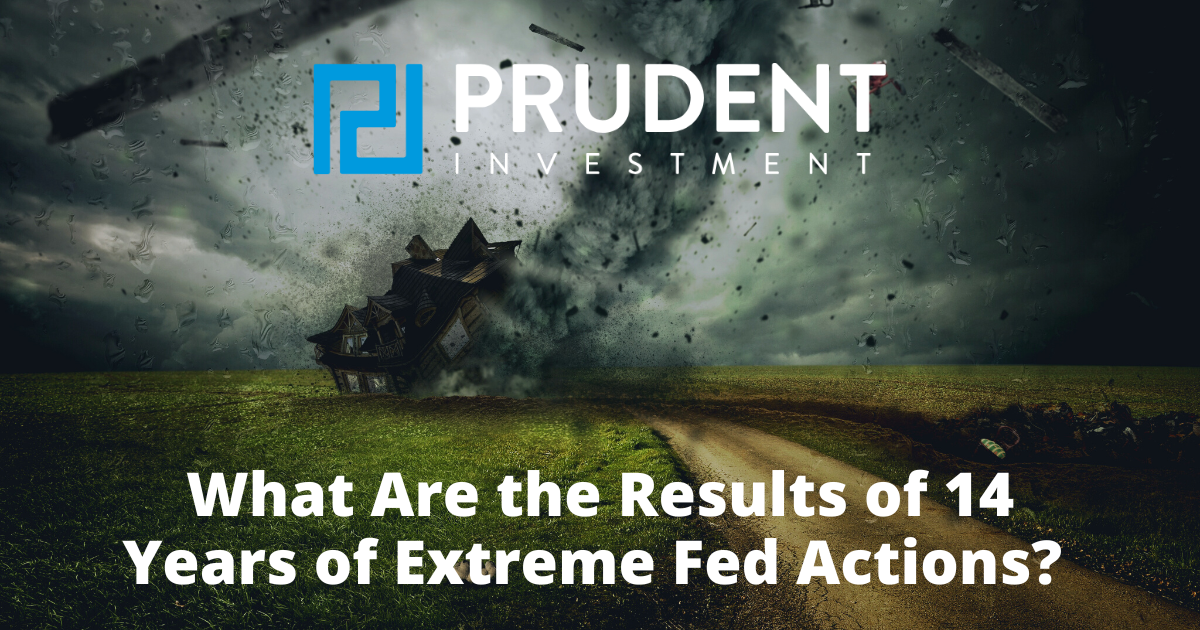Executive Summary
In this week’s Update, I share thoughts from Dennis M. Kelleher, Cofounder, President and CEO of Better Markets, “An independent, nonpartisan, nonprofit organization that promotes the public interest in financial reform, financial markets and the economy.” Since I have shared numerous thoughts on the Fed’s actions over the last decade, I thought it interesting to share another’s perspective. He addresses the policies used from 2008-2022 which have created instability in the financial markets. He then notes these policies have significantly contributed to – if not caused – many of the issues the Fed is currently fighting. I encourage you to take a quick read below.
Please continue to The Details for more of my analysis.
“Endorsing unconventional monetary policies unquestioningly is tantamount to saying that it is acceptable to distort asset prices if there are other domestic constraints on growth.”
–Raghuram Rajan
The Details
Over the past decade, I have written numerous newsletters explaining and critiquing the actions of the Federal Reserve Bank (Fed). More specifically, I have criticized the use of extreme monetary policy programs (Quantitative Easing and Zero Interest Rate Policy) to provide excessive liquidity for the economy. Co-ordinating with the Federal government to sidestep the capitalist process, using fear to gain support for overreaching actions, has effectively transformed the economy from capitalism to crony-capitalism. Using the same formula – albeit in increasing doses – for each “crisis” merely compounds the problems which must eventually be faced.
Dennis M. Kelleher, Cofounder, President and CEO of Better Markets, “An independent, nonpartisan, nonprofit organization that promotes the public interest in financial reform, financial markets and the economy,” recently stated the following regarding a report on the Fed’s actions “decoupling asset pricing from risk from 2008-2022 and creating systemic instability.”
“While most of the media coverage of the Fed is focused on inflation and the hard turn in monetary policy, it is important to understand how the Fed’s own unprecedented policies over the last 14 years have significantly contributed to – if not caused – many of the issues they are now trying to address. Our report details how these policies decoupled the relationship between asset prices and risk and ignited a historic borrowing and debt binge. These are now being unwound as the Fed quickly and forcefully reverses course, creating serious risks that could result in financial and economic instability. Put differently, the Fed is in many ways fighting problems of its own creation. And considering the scale of the problems, it is very difficult to solve without some damage.
Since the 2008 financial crisis, the Fed has focused more on short-term objectives, failing to prioritize sensible long-term risk management and even ignoring some of its basic principles. It has been very concerned with inflation expectations becoming entrenched – first expectations of low inflation prior to the pandemic and now high inflation – but it wasn’t concerned with the entrenchment of expectations around its ultra-accommodative policies. Similarly, it consistently failed to see – or appropriately consider – itself as a source of major risks.
As a result, rates were near zero or at historic lows between the 2008 Crash and the current fight against inflation, and the Fed’s balance sheet expanded immensely to nearly $9 trillion – nine times as large as before the 2008 Crash. With expectations of consumers, businesses, and even the U.S. Government around cheap debt and of financial markets around readily-available liquidity being fully entrenched, there was an historic increase in the amount of debt and a decoupling of the prices of financial assets from their underlying risks. This dynamic was put into overdrive by the Fed’s outsized actions in response to the 2020 pandemic that flooded trillions of dollars into markets, which led to indiscriminate risk taking by pushing investors into riskier assets. Indeed, the Fed left no margin for error, continuing its immense asset purchases for two full years after the 2020 pandemic-related stress, despite glaring warning signs including from credit markets and rising inflation.
As monetary policy rapidly shifts to a potentially new era that will begin with a much higher federal funds rate compared to the extended period of near-zero policy, the risk-taking and debt buildup from the prior era will pose significant financial stability risks that threaten to cause catastrophic damage. Without undertaking a frank, unbiased, and data-driven assessment of the Fed’s prior actions, we risk repeating the same mistakes and putting the U.S. in a series of highly abnormal boom-and-bust cycles that are almost entirely driven by monetary policy.”
If you have an interest in learning more about Fed actions and results since the Financial Crisis, I encourage you to read Better Market’s full report here.
The S&P 500 Index closed at 4,090, down 1.1% for the week. The yield on the 10-year Treasury Note rose to 3.74%. Oil prices increased to $80 per barrel, and the national average price of gasoline according to AAA fell to $3.42 per gallon.
© 2021. This material was prepared by Bob Cremerius, CPA/PFS, of Prudent Financial, and does not necessarily represent the views of other presenting parties, nor their affiliates. This information should not be construed as investment, tax or legal advice. Past performance is not indicative of future performance. An index is unmanaged and one cannot invest directly in an index. Actual results, performance or achievements may differ materially from those expressed or implied. All information is believed to be from reliable sources; however we make no representation as to its completeness or accuracy.
Securities offered through First Heartland Capital, Inc., Member FINRA & SIPC. | Advisory Services offered through First Heartland Consultants, Inc. Prudent Financial is not affiliated with First Heartland Capital, Inc.

